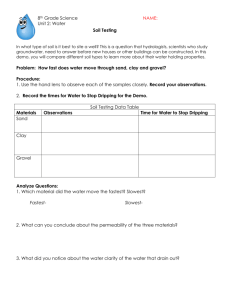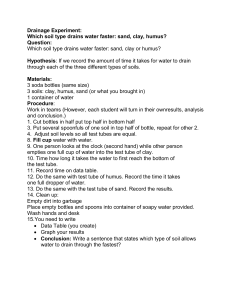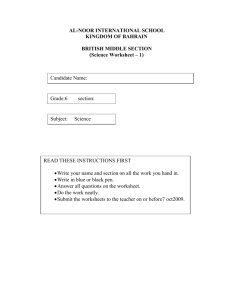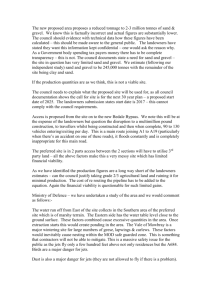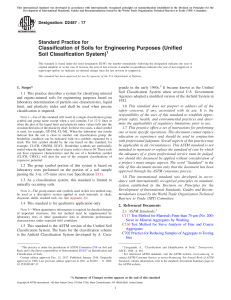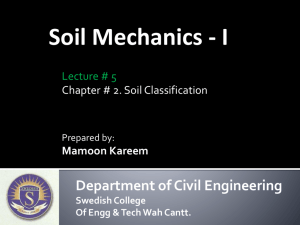Laboratory 5 Handout
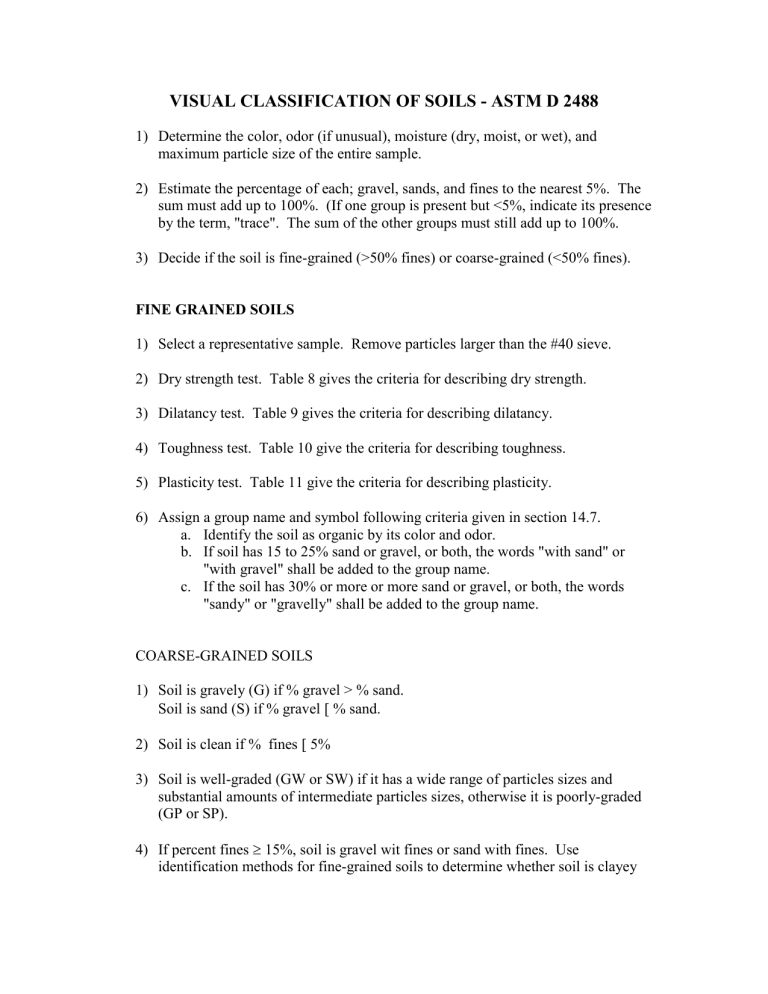
VISUAL CLASSIFICATION OF SOILS - ASTM D 2488
1) Determine the color, odor (if unusual), moisture (dry, moist, or wet), and maximum particle size of the entire sample.
2) Estimate the percentage of each; gravel, sands, and fines to the nearest 5%. The sum must add up to 100%. (If one group is present but <5%, indicate its presence by the term, "trace". The sum of the other groups must still add up to 100%.
3) Decide if the soil is fine-grained (>50% fines) or coarse-grained (<50% fines).
FINE GRAINED SOILS
1) Select a representative sample. Remove particles larger than the #40 sieve.
2) Dry strength test. Table 8 gives the criteria for describing dry strength.
3) Dilatancy test. Table 9 gives the criteria for describing dilatancy.
4) Toughness test. Table 10 give the criteria for describing toughness.
5) Plasticity test. Table 11 give the criteria for describing plasticity.
6) Assign a group name and symbol following criteria given in section 14.7. a.
Identify the soil as organic by its color and odor. b.
If soil has 15 to 25% sand or gravel, or both, the words "with sand" or
"with gravel" shall be added to the group name. c.
If the soil has 30% or more or more sand or gravel, or both, the words
"sandy" or "gravelly" shall be added to the group name.
COARSE-GRAINED SOILS
1) Soil is gravely (G) if % gravel > % sand.
Soil is sand (S) if % gravel
% sand.
2) Soil is clean if % fines
5%
3) Soil is well-graded (GW or SW) if it has a wide range of particles sizes and substantial amounts of intermediate particles sizes, otherwise it is poorly-graded
(GP or SP).
4) If percent fines
15%, soil is gravel wit fines or sand with fines. Use identification methods for fine-grained soils to determine whether soil is clayey
(GC or SC) or silty (GM or SM).
5) If soil has 10% fines, give dual identification using two symbols with a hyphen "-
" in between. a.
First symbol for clean gravel or sand (GW, GP, SW, SP). b.
Second symbol for gravel or sand with fines (GC, GM, SC, SM). c.
The group name is the name for the first symbol plus the word "with clay" or "with silt".
6) If soil is predominantly sand or gravel but contains
15% of the other coarsegrained constituent, the word "with gravel" or "with sand" are added to the group name.
7) Determine the angularity of the soil particles.
GENERIC SOIL DESCRIPTOIN (see appendix X1 for examples)
Group name (group symbol) - %'s of gravel, sand and fines (with descriptions of hardness and angularity for coarse-grained soils, with descriptions of plasticity, dry strength, dilatancy and toughness for fine-grained soils), color, (odor if unusual), moisture (dry, moist, wet), maximum size.
NOTES
1) For borderline soils, use a borderline symbol (e.g., CL/CH)
2) For intact samples, include a description of the consistency, structure, cementation, layering, etc.
